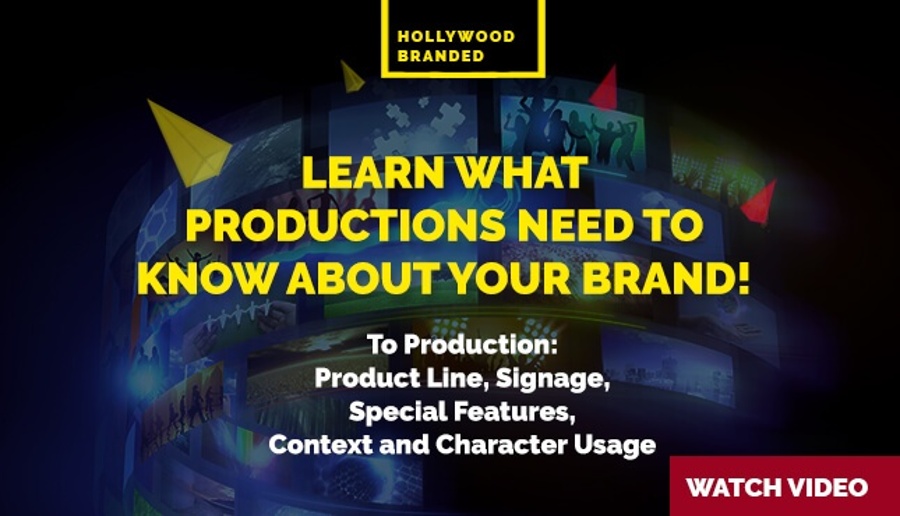Brands & Blockbusters: Why Movies are Still a Top Advertising Platform
Table Of Contents
Lights, Camera, Branding!
For over a century, movies have served as powerful vessels for storytelling and cultural influence. Today, amidst the rise of digital marketing, streaming platforms, and short-form social media, brands are still finding immense value in leveraging the cinematic world to reach global audiences. Blockbusters, with their wide appeal and lasting cultural impact, provide a unique advertising platform that few other mediums can replicate.
From iconic product placements to exclusive partnerships, movies have proven time and again that they can ignite brand recognition and loyalty like no other platform. In this article, Hollywood Branded explores why movies remain a top-tier advertising channel, offering brands opportunities to create lasting impressions and authentic connections with audiences.

the global reach of blockbusters
Blockbuster movies often have global releases, enabling brands to tap into a worldwide audience in a single campaign. A perfect example is the James Bond franchise, known for its strategic product placements. The 2021 film No Time to Die showcased brands like Omega, Aston Martin, and Heineken, which benefited from international exposure. This worldwide trend continued in 2023, with brands such as Etihad Airways, 7-Eleven, and Shell leveraging high-budget action films like Mission: Impossible – Dead Reckoning Part One, aligning their products with the adrenaline-pumping themes of the movie to captivate audiences globally.
 Credit: Etihad Airways
Credit: Etihad Airways
Moreover, the international appeal of movies often transcends language barriers. This makes films an especially attractive platform for luxury and tech brands eager to expand into emerging markets, such as Asia and Latin America, where Western blockbusters maintain significant cultural influence.
emotional reach and storytelling power
Movies create a deep emotional connection with viewers through storytelling, and when brands are part of that narrative, the impact is profound. Consider how FedEx became synonymous with reliability after its prominent feature in Cast Away. In 2024, similar storytelling integrations emerged, such as Deadpool & Wolverine which featured several notable brand partnerships, including those within the automotive sector. A standout collaboration was with Honda, prominently integrating the Honda Odyssey into the film's narrative. The vehicle played a significant role, serving as a key plot device and receiving substantial screen time. This strategic placement not only highlighted the Odyssey's features but also aligned with the film's blend of action and humor, effectively reaching the movie's diverse audience.

Credit: Collider
exclusive partnerships and co-branded campaigns
In 2024, several brands leveraged blockbuster films as vehicles for co-branded campaigns. One notable example was Pilot Pen's partnership with the Mean Girls movie, which launched a limited-edition pink-themed G2 pink pen pack. This collaboration went viral on social media, driving both sales and engagement, while reinforcing the cultural phenomenon of the film. The latest installment in the 'Despicable Me' franchise saw collaborations with brands like McDonald's, which offered themed Happy Meal toys, and Xfinity, featuring the Minions in their advertisements. These partnerships not only extended the reach of the films but also allowed brands to create limited-edition products that capitalized on the excitement of the release.
 Credit: Pilot Pen
Credit: Pilot Pen
Immersive Experiences and the Role of Technology
As technology evolves, brands are leveraging immersive experiences to amplify their association with movies. In 2024, virtual reality (VR) and augmented reality (AR) campaigns played a significant role in promoting blockbusters. For instance, Hamilton, a luxury watch brand, partnered with Dune: Part Two to create an AR experience where users could explore Arrakis while learning about the craftsmanship of its watches. Working closely with the film's prop master, Doug Harlocker, Hamilton's designers crafted a watch that seamlessly integrated into the movie's setting, embodying the spirit of the Fremen, the desert-dwelling people of Arrakis. This collaboration marked a significant milestone for Hamilton, further cementing its reputation as a premier watchmaker for filmmakers. The consumer AR experience allowed fans to virtually interact with the film-inspired timepieces, enhancing engagement and providing a deeper connection to the movie's universe. Users could virtually "try on" watches, explore detailed 3D models, and access exclusive film-themed content.
 Credit: Watchonista
Credit: Watchonista
This AR initiative not only showcased Hamilton's innovative approach to marketing but also bridged the gap between cinematic art and consumer experience, allowing fans to engage with the "Dune" universe in a novel and interactive way.
Streaming vs. Theatrical Releases: A New Era of Marketing
With the rise of streaming services like Netflix, Amazon Prime, and Disney+, brands are adapting their strategies to reach audiences on multiple platforms. While traditional theatrical releases remain a dominant force for product placement, direct-to-streaming films offer new opportunities for subtle and innovative integrations. For example, in 2024, Adidas collaborated with Supacell on Netflix, featuring its streetwear prominently in scenes tied to the show's urban superhero theme. Similarly, Apple integrated its latest MacBook Pro into key scenes of Black Doves, emphasizing the tech-savvy nature of the characters in this political spy thriller.
The key advantage of streaming platforms is the long-tail effect. Unlike theatrical releases that fade after weeks, streaming films and series remain accessible indefinitely, offering brands extended exposure and repeated opportunities for consumer recall.
Sustainability and Brand Ethics in Film Partnerships
A growing trend in 2024 was brands using films to align with environmental and social causes. Patagonia's collaboration with the environmental documentary Wild Waters demonstrated how brands could promote sustainability while leveraging the cinematic medium. By funding the project and providing its gear for the documentary, Patagonia not only increased product visibility but also reinforced its commitment to environmental advocacy.
This alignment of brand ethics with storytelling resonates deeply with today's socially conscious consumers, who prioritize companies that reflect their values.
The ROI of Movie Advertising
One of the reasons movies continue to dominate as an advertising platform is the measurable return on investment (ROI) they deliver. According to industry reports, brands featured in the top 10 blockbusters of 2024 saw an average increase of 15% in sales and a 20% uptick in brand recall within three months of a film's release. These figures underscore the effectiveness of movies in amplifying brand visibility and driving consumer behavior, making them a worthwhile investment despite the high costs.
Despite the ever-changing landscape of marketing, movies remain a timeless platform for brand storytelling and consumer engagement. Whether through immersive technology, strategic product placement, or co-branded campaigns, blockbusters continue to provide unparalleled opportunities for brands to leave a lasting impression on audiences.
Eager To Learn More?
Loved discovering how blockbusters supercharge brand success? Then explore these must-read articles that unveil insider secrets behind Hollywood’s most powerful product placements, co-branding strategies, and the future of brand integration.
- Behind the Scenes: How Major Studios Collaborate with Brands for Mutual Success
- The Benefits and Strategies of Product Placement in Movies
- Hitching a Ride on the Hype: The Benefits of Co-Branding with Movies
- The Hidden Value of Product Placement
- The Future of Product Placement and Brand Integration
Want to stay in the know about all things pop culture? Look no further than our Hot in Hollywood newsletter! Each week, we compile a list of the most talked-about moments in the entertainment industry, all for you to enjoy!







